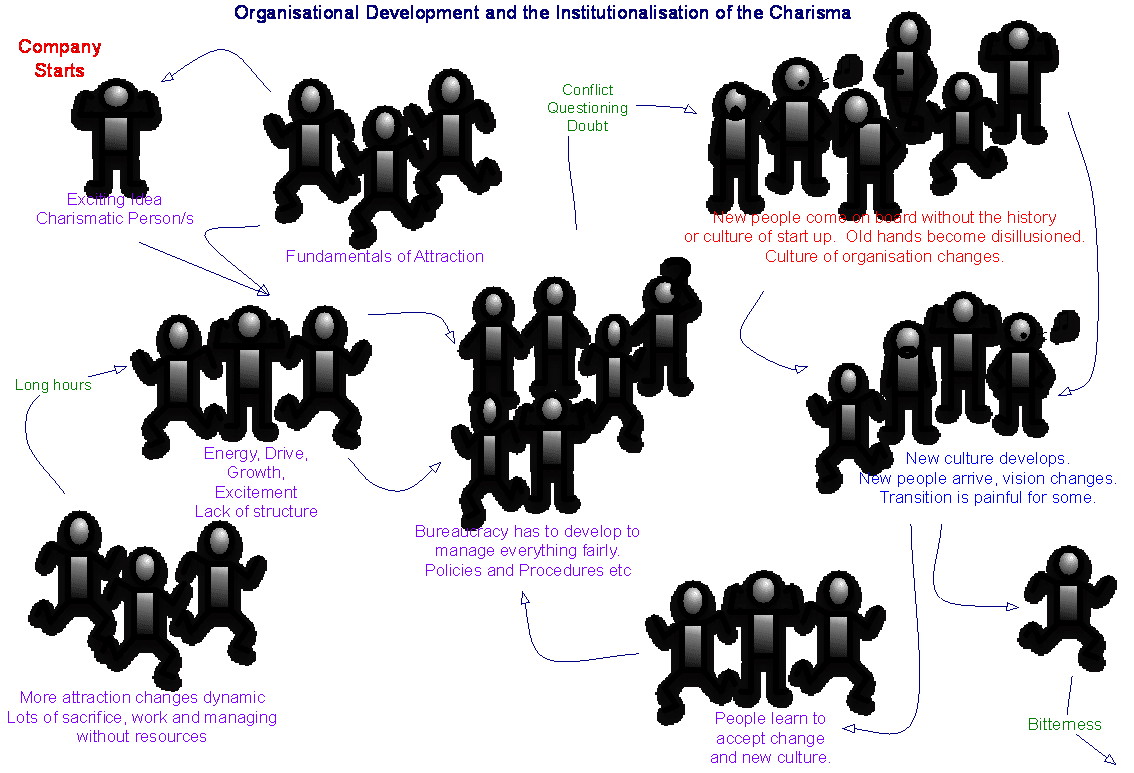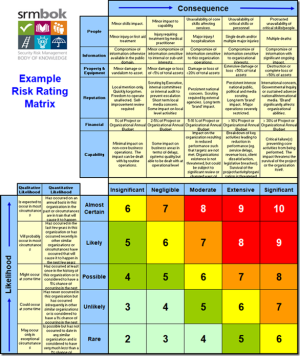We all know the saying ‘you can’t see the forest for the trees’ meaning, when you are so deep in something you can’t see what you are in. The saying also captures the dynamic of immersion, of being so deeply committed to something that it takes on a life of its own, on other words it becomes an Archetype. This is how we often speak of Safety as personified and Archtypical, as if it has a life of its own (and I think it does). Sometimes, it is those outside of the forest who are best placed to envision something different. They ask different questions and see the world differently. Sometimes it is the outsider who offers a different vision of possibilities and a creative imagination for understanding different trajectories. We often call such perceptions and observations ‘vision’. When one applies vision to practice we might call this ‘envisioning’.
The idea of knowledge cultures is associated with the movement of transdisciplinarity (and multidisciplinarity) and recognizes Professions as Knowledge Cultures (https://link.springer.com/chapter/10.1007%2F978-94-6091-994-7_2).
In many ways each discipline becomes so immersed in itself that it loses vision of what is outside. We often use the language of ‘silos’ to describe this. When I was in the teaching profession and the clergy professions this was certainly the case. We sometimes use the language of being ‘blinkered’ to describe such phenomena.
Unfortunately, knowledge when enculturated through affirmation and confirmation bias makes one see the world (paradigm-worldview) only through the lens of that discipline. This is one of the dilemmas of professionalization (https://safetyrisk.net/safety-and-risk-professionalisation/), it creates a blinkered view that once politcised institutionalizes knowledge and codifies language so that a fortress is created against change. Soon all criticism is demonized and so the discipline becomes more entrenched within itself. This dynamic was well articulated by Weber (https://www.jstor.org/stable/3234946?seq=1) in the Institutionalisation of the Charisma (see Figure 1).
Figure 1 Institutionalisation of the Charisma

The Institutionalisation of the Charisma is also a challenge in forming associations. Whilst association is good because it builds support of like-for-like it also closes off opportunity for learning outside of itself. Cameron and Quinn captured this beautifully in their work on the Competing Values Framework (https://www.thercfgroup.com/files/resources/an_introduction_to_the_competing_values_framework.pdf). Unfortunately, each discipline ends up creating a closed system of itself through professionalization and enculturates itself into a forest that can’t see what its outside its own trees. This is where transdisciplinarity offers hope, imagination and change (https://safetyrisk.net/so-you-want-culture-change/ ).
One very different knowledge culture to the discipline of Safety is that of Indigenous (First Peoples) culture. When I was a History Teacher in the 1970s we were just starting to realize just how much Indigenous Historiography had been constructed by Western Imperialist Colonialist neo-liberal bias. Rob Pascoe’s work on ‘The Manufacture of Australian History’ was my introduction into just how much History is constructed. Since then I have been involved in Indigenous services through work in government and friendships that have helped inform a completely ‘other’ view of Indigenous culture and history. Bruce Pascoe’s brilliant book Dark Emu is a recent revelation that confirms this understanding (https://www.booktopia.com.au/dark-emu-bruce-pascoe/book/9781921248016.html ).
There could be nothing further removed from the STEM-only worldview than how First Nation Australians understand the world. Indeed, the STEM-only worldview for Indigenous Australians closely represents all they associate with dispossession, power, colonialism and control. I wrote about this First People’s worldview in my latest book (https://www.humandymensions.com/product/the-social-psychology-of-risk-handbook/) pp. 75-78.
One of my favourite articles that demonstrates the gap in knowledge cultures is by Akehurst ‘Smoking Out Evil Spirits’ (Quadrant Jan 2012) https://quadrant.org.au/magazine/2012/01-02/smoking-out-evil-spirits/ . In this article Akehurst demonstrates the cognitive dissonance of scientists in CSIRO undertaking a ‘welcome to country’ and ‘smoking ceremony’ to open a new building. Akehust opens his piece by stating ‘Metaphysics is not the business of science’. How true. The article then proceeds through CSIRO documentation to show how this scientific organization has written in policy the acceptance of evil spirits and the cleansing out of physical space of such ‘spirits’. I’d recommend you read the article.
Similarly, the opening of the Australian Parliament acknowledges the same worldview of First People’s (https://www.msn.com/en-au/video/sport/46th-parliament-resumes-with-indigenous-smoking-ceremony/vp-AADJ4S8). In Akehurst’s words: ‘If the CSIRO does not believe in evil spirits, its endorsement of smoking ceremonies is cynical and insulting to Aborigines’. The Australian Parliament that also starts with the Christian Lord’s Prayer (https://www.aph.gov.au/About_Parliament/Senate/Powers_practice_n_procedures/aso/so050). Does the parliament syncretise both traditions in spiritual affirmation?
So, this brings us to the discipline, industry and tradition of safety. If the safety worldview is an engineering and science worldview as is demonstrated by its origins (eg. in the US the American Society of Safety Professionals used to be the American Society of Safety Engineers), how does it engage with other knowledge cultures other than its own? I listed some non-safety knowledge cultures here: https://safetyrisk.net/so-you-want-culture-change/
What does Safety lose by not engaging with other ways of knowing other than its own? Let’s return to the issue of language.
We find throughout the safety industry the reductionist language of ‘components’, ‘factors’, ‘capacities’, ‘properties’ and ‘parts’ dominates its understanding of systems. Indeed, in Safety (regardless of school of thought (https://safetyrisk.net/download-page/download-info/risk-and-safety-schools-of-thought-docx/) and regardless of whether a person denigrates reductionism, the language of reductionism remains dominant in the sector. So whilst there is some condemnation of reductionist scientific approaches to safety, reductionist language is retained to try and understand and manage systems. This is why I prefer the language of ‘ecologies’ to that of ‘systems’. Why does this matter?
What is systems did not act as the sum of component parts? What if systems were autonomous and whole? Or as Maturana and Varela demonstrate are ‘autopoietic’ (https://monoskop.org/images/3/35/Maturana_Humberto_Varela_Francisco_Autopoiesis_and_Congition_The_Realization_of_the_Living.pdf). What if the very questions we ask in safety, regardless of rhetoric, drive us more deeply into a ‘factors’ approach to systems and humans as components in a system?
One of the critical limits of worldviews and disciplines is what their discourse and language permit. One cannot speak or hear a language one doesn’t know. This is why language is the foundation of culture and why it is critical to First nations peoples. Hence in safety, there are many people who speak theologically and don’t know it. Similarly, engineers and scientists use non-STEM metaphors and language and don’t realize how their use of such language constrains and contradicts their message and meaning (semiosis). I have observed recently across all safety schools of thought, the use of language of ‘mystery’, ‘faith’ and ‘grace’ when there are no answers to questions about the autonomy of systems (https://www.researchgate.net/publication/327427067_The_Theory_of_Graceful_Extensibility_Basic_rules_that_govern_adaptive_systems). It is interesting that this piece on adaptive systems uses the language cosmology in concert with the language of First People’s cosmology yet holds a fall back position of engineering. Once ‘framed’ through STEM-only one returns to STEM-only. Sustained adaptability is ‘mysterious’ because the worldview doesn’t move. And so, using the theological language and metaphor of ‘graceful extensibility’ Woods seeks to explain the mystery of transition zones. Once again back to the language of factors, components and parts. This is not to say that this paper doesn’t make a valuable contribution but rather the demonstrate that one cannot explain a theory without exploring the language, discourse, metaphor and rhetoric of that theory.
And so, in Safety, end up with a STEM-only institution and political organizing infused with theological, metaphysical and poetic discourse in direct contradiction to identity and practice. Very similar to the CSIRO story.
Could it be that transdisciplinarity offers a new hope for a vision for safety? Could it be that cultures of knowledge we don’t know, despite safety’s use of their language, offer a pathway for safety success? Could it be for all the rhetoric of adaptability that we retreat to a new control system because worldview has not moved? Maybe we have much to learn from First people cultural knowledge more than just patronizing their existence. Maybe the skills required to help make safety people better and move away from the current malaise of bureaucracy-compliance-policing is to be found in other disciplines and a new curriculum.



bernardcorden says
If you want to destroy a culture destroy its language, which is precisely what social media platforms such as Twitter and Facebook do.
Rob Long says
Taking language is the first step in imperialism/colonialism. and, reframing a language is the next step in propaganda. Once you have made language meaningless with stuff like zero, beyond zero, zero plus one or triple zero you can then play the games of fake news and false truths with a population who cannot discern or think critically. A simple study in semantics, semiotics, semiosis or semiology would demonstrate that th decline of cultures is connected to vested interests constructing grammar to suit their desired outcomes, which are rarely in the interets of keeping people well or safe.
Admin says
Just read and enjoyed the Akehurst article – CSIRO look a bit silly don’t they
Rob Long says
And if you criticise STEM (or safety) you’re deemed anti-STEM. This is because such worldview do not understand dialectic of praxis.
The first step is to demonise criticism by making non compliance political. This is how First People’s are demonised. So if you are not of us, you must be against us mentalitie. So, STEM doesn’t mature.
Criticism from outside stimulates those inside to dissonance and response, to help advance and mature the organisation. When conformity bias rules inside criticism ceases. So CSIRO (and safety) becomes a closed non-adaptive system and nothing changes.
Rob long says
I think it says much about STEM-only knowledge culture and it’s inability to think outside of its worldview. Of course in doing so misses out on the richness and vision of transdisciplinarity.
bernardcorden says
It is quite evident via the incessant puerile sludge such as Safety II, Safety Differently, Human Factors and Resilience Engineering, which is repeatedly regurgitated on most safety blogs and at numerous safety conferences. The message is often delivered by unenlightened narcissists and merely creates an obsessive contagion with aggressive egocentric ambitions and delusions about ends and means.
They might have the answer but they are typically part of the problem and are merely eking out a deceptive false existence via an insatiable desire to win at all costs and sustain a politically correct self-image with and obedience to the orthodoxy. We need less reformation and more transformation.
These chowderheaded “thought leaders” do not embrace genuine emancipation but freedom for their new ideology or brand of Kool Aid.
“There is nothing more tragic in the contemporary era than the misuse of power and action” – Thomas Merton
Admin says
Just read and enjoyed the Akehurst article – CSIRO look a bit silly don’t they
Rob long says
I think it says much about STEM-only knowledge culture and it’s inability to think outside of its worldview. Of course in doing so misses out on the richness and vision of transdisciplinarity.
Rob Long says
And if you criticise STEM (or safety) you’re deemed anti-STEM. This is because such worldview do not understand dialectic of praxis.
The first step is to demonise criticism by making non compliance political. This is how First People’s are demonised. So if you are not of us, you must be against us mentalitie. So, STEM doesn’t mature.
Criticism from outside stimulates those inside to dissonance and response, to help advance and mature the organisation. When conformity bias rules inside criticism ceases. So CSIRO (and safety) becomes a closed non-adaptive system and nothing changes.
bernardcorden says
It is quite evident via the incessant puerile sludge such as Safety II, Safety Differently, Human Factors and Resilience Engineering, which is repeatedly regurgitated on most safety blogs and at numerous safety conferences. The message is often delivered by unenlightened narcissists and merely creates an obsessive contagion with aggressive egocentric ambitions and delusions about ends and means.
They might have the answer but they are typically part of the problem and are merely eking out a deceptive false existence via an insatiable desire to win at all costs and sustain a politically correct self-image with and obedience to the orthodoxy. We need less reformation and more transformation.
These chowderheaded “thought leaders” do not embrace genuine emancipation but freedom for their new ideology or brand of Kool Aid.
“There is nothing more tragic in the contemporary era than the misuse of power and action” – Thomas Merton
bernardcorden says
If you want to destroy a culture destroy its language, which is precisely what social media platforms such as Twitter and Facebook do.
Rob Long says
Taking language is the first step in imperialism/colonialism. and, reframing a language is the next step in propaganda. Once you have made language meaningless with stuff like zero, beyond zero, zero plus one or triple zero you can then play the games of fake news and false truths with a population who cannot discern or think critically. A simple study in semantics, semiotics, semiosis or semiology would demonstrate that th decline of cultures is connected to vested interests constructing grammar to suit their desired outcomes, which are rarely in the interets of keeping people well or safe.